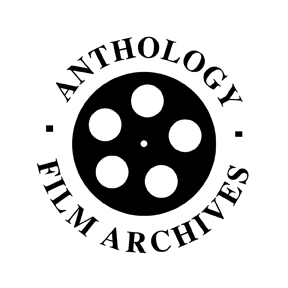Related Research Articles
Czechoslovakia 1968 is a 1969 short documentary film about the "Prague Spring", the Warsaw Pact invasion of Czechoslovakia. The film was produced by the United States Information Agency (USIA) under the direction of Robert M. Fresco and Denis Sanders and features the graphic design of Norman Gollin.

Dog Star Man is a series of short experimental films, all directed by Stan Brakhage, featuring Jane Wodening. It was released in installments between 1961 and 1964 and comprises a prelude and four parts. In 1992, Dog Star Man was included in its entirety in the annual selection of 25 motion pictures added to the National Film Registry of the Library of Congress. being deemed "culturally, historically, or aesthetically significant" and recommended for preservation.

Eaux d'artifice (1953) is a short experimental film by Kenneth Anger.

A Movie is a 1958 experimental collage film by American artist Bruce Conner. It combines pieces of found footage taken from various sources such as newsreels, soft-core pornography, and B movies, all set to a score featuring Ottorino Respighi's Pines of Rome.
Serene Velocity is a 1970 American experimental short film directed by Ernie Gehr. Gehr filmed it in the basement hallway of a Binghamton University academic building, using a static camera position and changing only the focal length of the camera. It is recognized as a key work of structural filmmaking and has been inducted into the U.S. National Film Registry.
Fuji is a 1974 American animated short by Robert Breer.

The Dickson Experimental Sound Film is a film made by William Dickson in late 1894 or early 1895. It is the first known film with live-recorded sound and appears to be the first motion picture made for the Kinetophone, the proto-sound-film system developed by Dickson and Thomas Edison. The film was produced at the "Black Maria", Edison's New Jersey film studio. There is no evidence that it was ever exhibited in its original format.
Nostalgia, styled (nostalgia), is a 1971 American experimental film by artist Hollis Frampton. It is part of his Hapax Legomena series.

Lawrence Jordan is an American independent filmmaker who is most widely known for his animated collage films. He was a founding member of the Canyon Cinema Cooperative and the Camera Obscura Film Society.
Rose Hobart is a 1936 experimental collage film created by the artist Joseph Cornell, who cut and re-edited the Universal film East of Borneo (1931) into one of America's most famous surrealist short films. Cornell was fascinated by the star of East of Borneo, an actress named Rose Hobart, and named his short film after her. The piece consists of snippets from East of Borneo combined with shots from a documentary film of an eclipse.

Anthology Film Archives is an international center for the preservation, study, and exhibition of film and video, with a particular focus on independent, experimental, and avant-garde cinema. The film archive and theater is located at 32 Second Avenue on the southeast corner of East 2nd Street, in a New York City historic district in the East Village neighborhood of Manhattan.
Structural film was an avant-garde experimental film movement prominent in the United States in the 1960s. A related movement developed in the United Kingdom in the 1970s.
H2O (1929) is a short silent film by photographer Ralph Steiner. It is a cinepoem showing water in its many forms.
Sidney Peterson, was an American writer, artist, avant-garde filmmaker, and educator. He founded the first film courses at the California School of Fine Arts in 1947.

The National Film Registry (NFR) is the United States National Film Preservation Board's (NFPB) collection of films selected for preservation, each selected for its historical, cultural and aesthetic contributions since the NFPB's inception in 1988.
Reminiscences of a Journey to Lithuania is a 1972 documentary film by Jonas Mekas. It revolves around Mekas' trip back to Semeniškiai, the village of his birth. It was Mekas' second diary film, which narrates through highly personal footage and voiceover the Mekas brothers’ visit to their native Lithuanian village of Semeniškiai, Panevėžys in 1971 after a 27-year absence.
The Lead Shoes is a 1949 experimental film directed by Sidney Peterson at Workshop 20 at the San Francisco Art Institute. The film was made using distorting lenses. The film is a 17-minute black and white short.
The Red Book is a 1994 American experimental animated short film by experimental filmmaker and theater/installation artist Janie Geiser.
Collage film is a style of film created by juxtaposing found footage from disparate sources. The term has also been applied to the physical collaging of materials onto film stock.
Tom, Tom, the Piper's Son is a 1969 American experimental film made by Ken Jacobs.
References
- ↑ Larry Jordan-AWN
- ↑ LUX
- ↑ WorldCat.org
- ↑ "Essential Cinema". Anthology Film Archives . Retrieved 2022-09-12.
- ↑ Library of Congress (2011-01-04). "2010 National Film Registry Announced - News Releases". Library of Congress . Retrieved 2012-09-01.
- ↑ The National Film Registry Adds ‘The Empire Strikes Back’ and 24 More to the Library of Congress — /Film